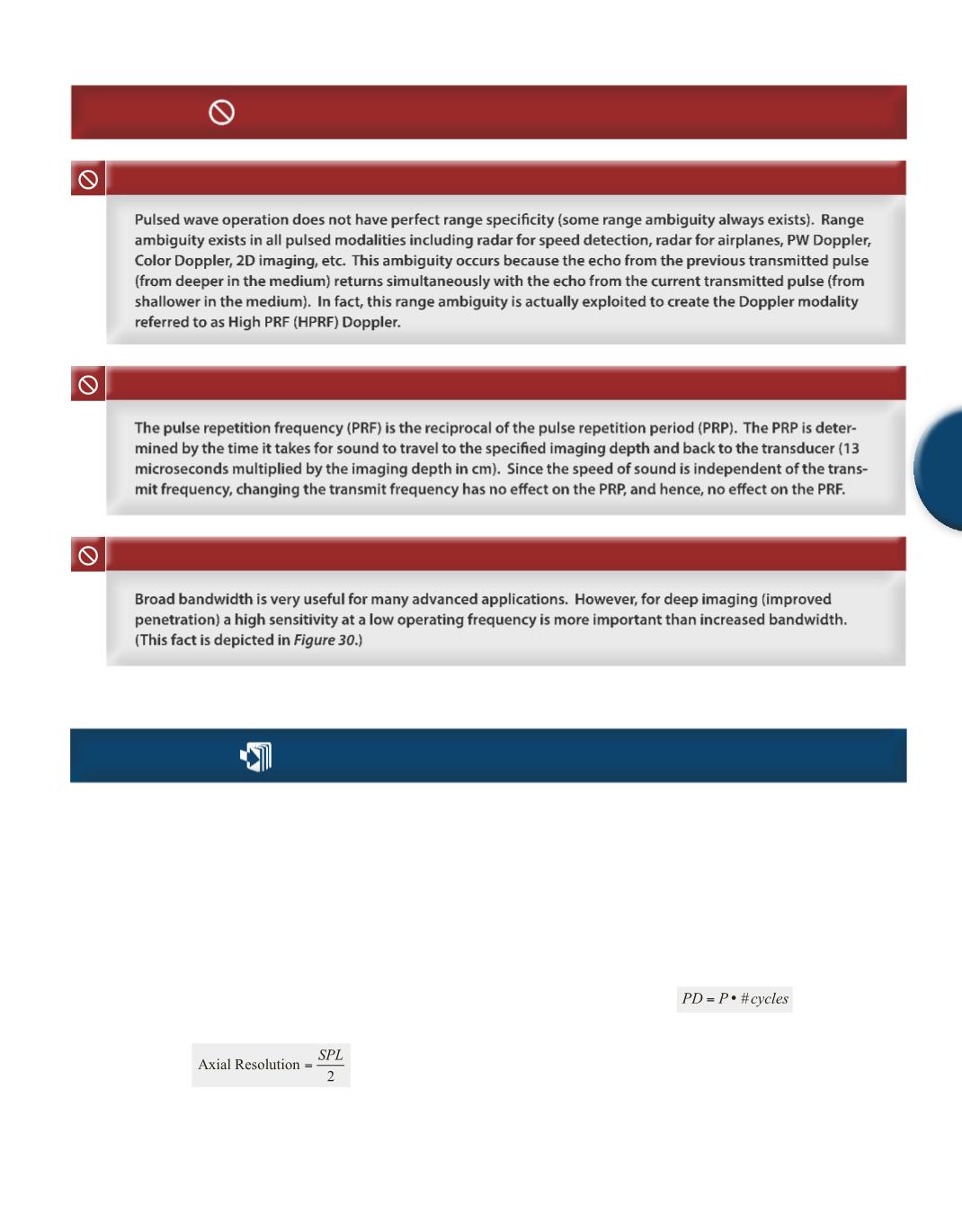
Chapter 4: Pulsed Wave Operation
97
4
Misconception #1: PW has no range ambiguity.
Misconception #2: Changing the transmit frequency changes the PRF.
Misconception #3: More (broader) bandwidth is always better.
•
Continuous waves have no ability to resolve structures
separated in depth.
•
Pulsing is a technique which yields the ability to resolve
structures separated in depth.
•
For resolution, smaller numbers are better.
•
The shorter the pulse, the better the depth resolution.
Depth resolution is also referred to as longitudinal,
axial, radial, or range resolution.
•
The longitudinal resolution equals the spatial pulse
length divided by 2.
•
The factor of 2 derives from the fact that the roundtrip
effect is helping to separate the echoes from objects at
varying depths.
•
Because of the desire to use pulsed wave to achieve
some axial resolution, many parameters which describe
the pulse must be defined.
•
The time the pulse lasts is called the pulse
duration (PD).
•
The pulse duration is determined by the
period multiplied by the number of cycles in
the pulse.
•
The time between transmit events (from the
start of one pulse until the pulse is repeated)
is called the pulse repetition period (PRP).
•
The PRP is determined primarily by the im-
aging depth and is equal to the imaging depth
(in centimeters) multiplied by 13
µ
sec per cm.
COMMON MISCONCEPTIONS : PULSEDWAVE OPERATION
CHAPTER SUMMARY : PULSEDWAVE OPERATION
SAMPLE PAGE


